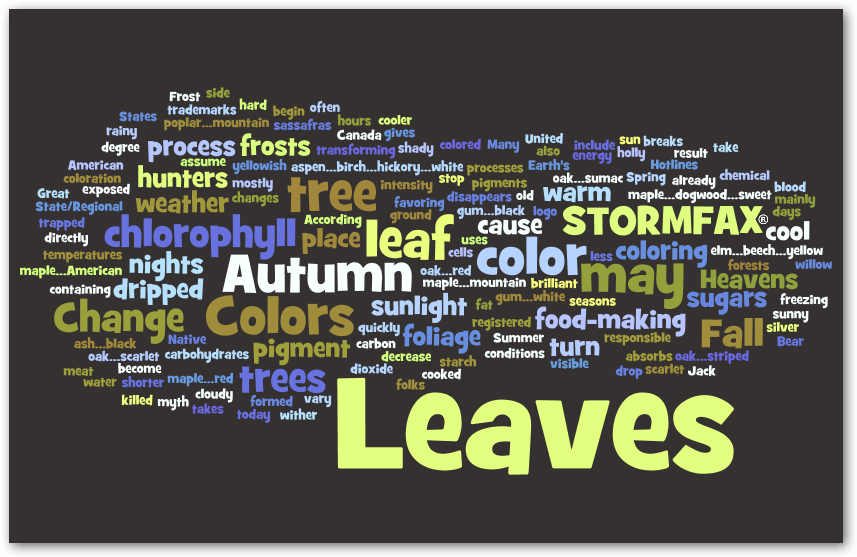



According to Native American myth, hunters in the Heavens killed the Great Bear in Autumn and its blood dripped over Earth's forests coloring some of the leaves red. As the hunters cooked the meat, fat dripped from the Heavens and colored some of the leaves yellow.
Most folks today assume old Jack Frost is responsible for changes in leaf color, but, not so. Many leaves begin to turn before we have any frosts. The change in coloring is the result of chemical processes which take place in the tree as the seasons change.
During the Spring and Summer, a food-making process takes place in the leaf in cells containing the pigment chlorophyll. This gives the leaf its green color. The chlorophyll absorbs energy from sunlight and uses it in transforming carbon dioxide and water to carbohydrates, such as sugars and
starch.
In the Fall, the decrease in intensity and shorter hours of sunlight and the cooler temperatures cause the leaves to stop their food-making process. The chlorophyll breaks down, the green color disappears, and the yellowish colors or pigments already in the leaf become visible. The Autumn foliage
of trees with mostly yellow colors, include: aspen...birch...hickory...white ash...black oak...striped maple...American elm...beech...yellow poplar...mountain holly and willow.
From the sugars trapped in the leaves during cool nights, a red pigment is often formed. Trees with red or scarlet leaves in Autumn are silver maple...mountain maple...red maple...dogwood...sweet gum...black gum...white oak...red oak...scarlet oak...sumac and sassafras.
Autumn weather conditions favoring the most brilliant colors are warm sunny days and cool, but not freezing, nights. A few hard frosts can cause the leaves to wither more quickly and drop to the ground. The degree of color may also vary from tree to tree.
Leaves directly exposed to the sun may turn red, while those on the shady side of the same tree or other trees, may be yellow. When there is mainly warm, cloudy and rainy weather in the Fall, the leaves may have less red coloration.
 Please read our Legal Notice and our Privacy Statement.
Please read our Legal Notice and our Privacy Statement.
